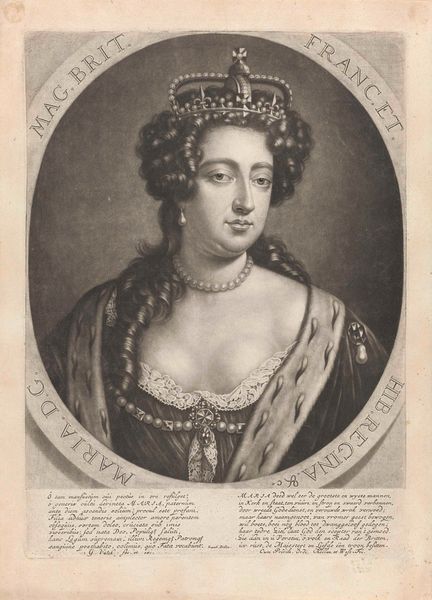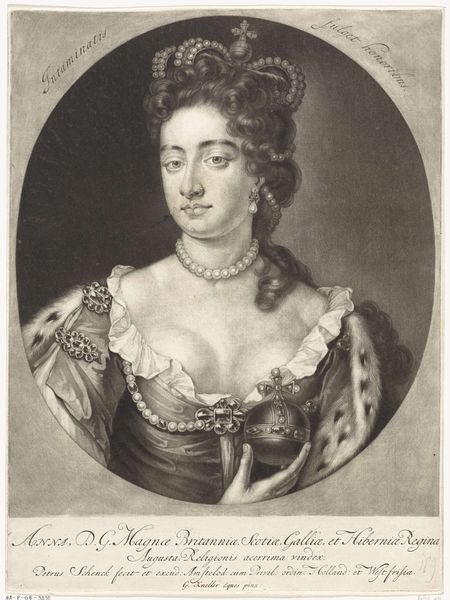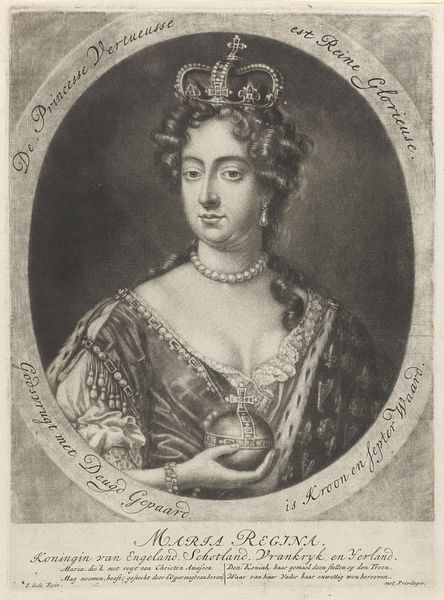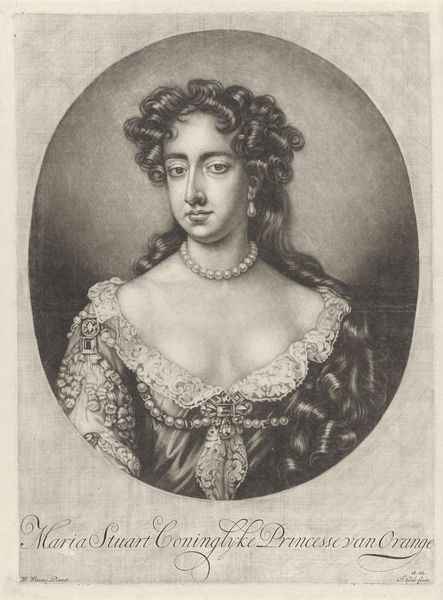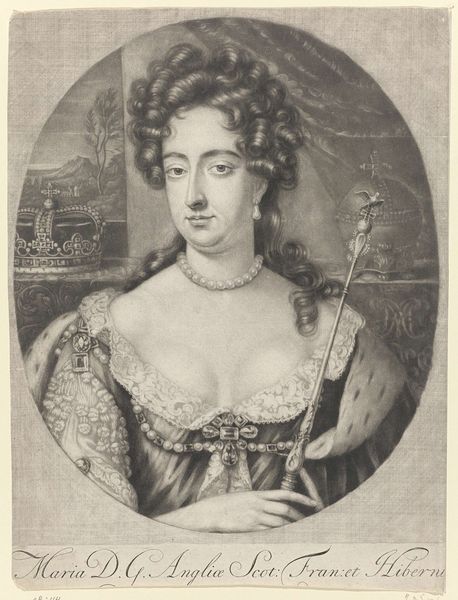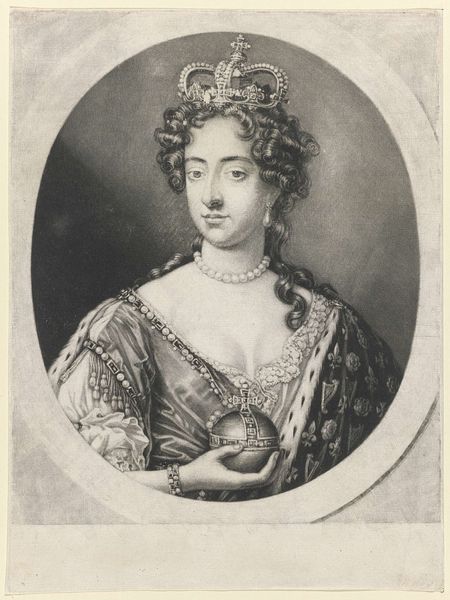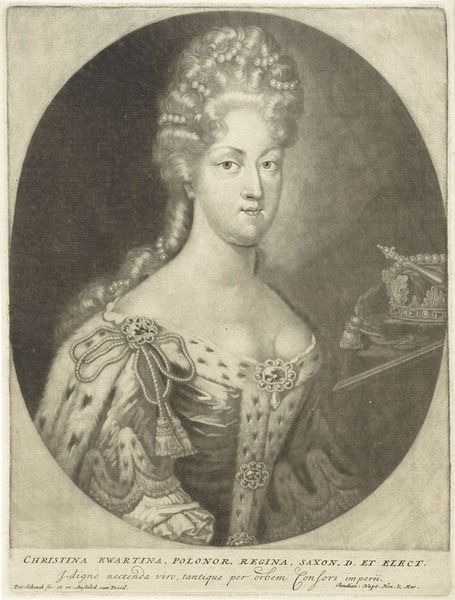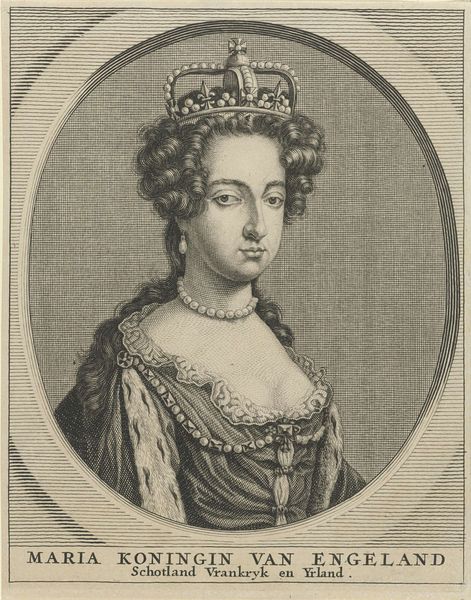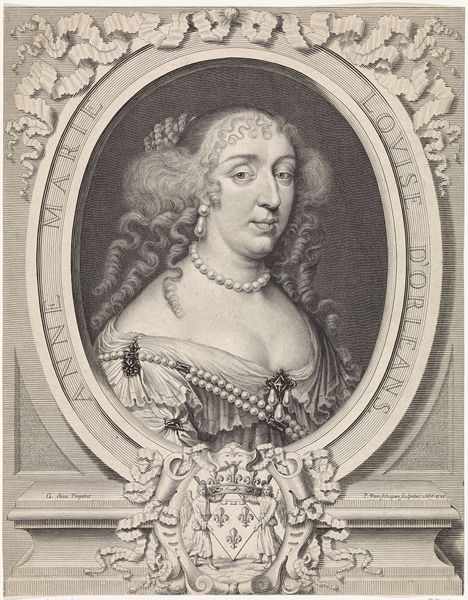
engraving
#
baroque
#
history-painting
#
engraving
Dimensions: height 336 mm, width 247 mm
Copyright: Rijks Museum: Open Domain
Editor: Here we have Pieter Schenk’s “Portret van Maria II Stuart,” made sometime between 1688 and 1711. It's an engraving and there's a formality to the pose and expression, a kind of...contained power, would you say? What's your interpretation of this piece, especially given its historical context? Curator: This engraving presents an interesting lens through which to examine 17th-century power dynamics. Look closely – how does the artist utilize symbols of monarchy, like the crown and scepter, to construct Maria's image? Also, consider the Dutch Republic at the time, a rising economic and political power. Editor: Well, I see the symbols as straightforward indicators of royalty. The Dutch inscription around the portrait feels almost propagandistic, designed to project an image of powerful leadership. Curator: Exactly! But consider the subtle tensions: Maria was a Stuart queen in England, yet this engraving was produced in the Netherlands. What implications might this have, given the complex relationship between the Dutch Republic and the English monarchy, particularly regarding religious and political conflicts? How do you think it played into Dutch identity formation during that era? Editor: That's something I hadn't thought of! It's less about simple propaganda, and more about situating her power within a Dutch context, perhaps as a symbol of their influence or aspirations? Curator: Precisely. Art like this wasn’t created in a vacuum. The placement and choices were deliberate statements. Understanding those connections transforms how we see it. What will you take away from our conversation about this engraving? Editor: I’ll remember to consider artworks within their multifaceted historical and political landscapes; it really enriches the viewing experience. Thank you!
Comments
No comments
Be the first to comment and join the conversation on the ultimate creative platform.
